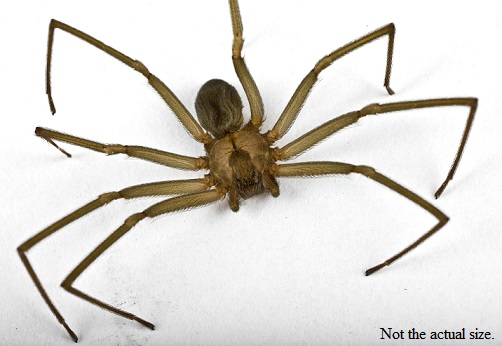Brown Recluse Spider Infestations: Scary, Problematic, & Costly, But Likely Covered By Insurance
As Halloween approaches, we’re reminded of all things creepy: ghosts, ghouls, goblins, and of course SPIDERS. However, unlike the former that live in the imagination of children, spiders are real. Not only are they real, certain types—like the Brown Recluse Spider—can wreak havoc on you.

The Brown Recluse Spider is unique in many ways. For example, the arrangement of their eyes is atypical (and very creepy):

Their venom is necrotic, meaning it damages the cells around the bite. They can also survive for very long periods without food. This trait can help lead to massive Brown Recluse Spider infestations—hundreds or thousands of them. While these mass infestations are not common, they do occur.
If you find Brown Recluse Spiders in your home, you might consider calling your insurance company as well as your exterminator. Getting rid of a Brown Recluse Spider infestation can be difficult and costly. Fortunately, your homeowners’ insurance policy may provide some financial relief for the costs associated with the extermination and provide you a place to stay until it happens.
You may face a few hurdles with your insurance company though. The first will be showing there is a “direct physical loss.” This is standard language in property policies. Insurers may argue that Brown Recluse Spiders do not cause physical damage to your property (as opposed to termites, which eat the wood), thus there is no “direct physical loss.” However, many courts have found that actual physical damage to the structure is not required for there to be “direct physical loss.” A loss of the physical use of the property is all that is required.
The second hurdle you may face is the “insect” exclusion. Most policies have an exclusion for damage caused by “insects.” Insurers may focus on to this provision and deny the claim. However, spiders are not insects; they are arachnids. Numerous publications from children’s dictionaries to scientific articles make this distinction. Spiders have eight legs and two body parts. Insects have six legs and three body parts.
Some policies also include the word “vermin” in this exclusion. Insurers may point to this term for support that the infestation should be excluded. “Vermin” is not defined in the policy. No Indiana case has held a spider is a “vermin.” Other courts have been split on the issue. Compare, Sincoff v. Liberty Mut. Fire Ins. Co., 183 N.E.2d 899 (N.Y. 1962) (finding coverage for carpet beetles and noting that experts do not agree on what a “vermin” is), with Gregory v. Nationwide Mut. Ins. Co., No. CIV S-10-1872 KJM EFB, 2012 U.S. Dist. LEXIS 179861, at *12–16 (E.D. Cal. Dec. 18, 2012) (excluding coverage for mites, a parasitic arachnid). This split of authority is evidence of an ambiguity, which should be construed in favor of coverage.
Other issues may also arise, but these are the primary ones you may face—other than the spider you now think you feel crawling up your leg. Happy Halloween.
About the Author
Greg Gotwald handles all types of policyholder insurance claims, including property, CGL, E&O, product, D&O, fidelity/crime, environmental, etc. He consults with clients on coverage programs to identify gaps.
Categorized: Articles

